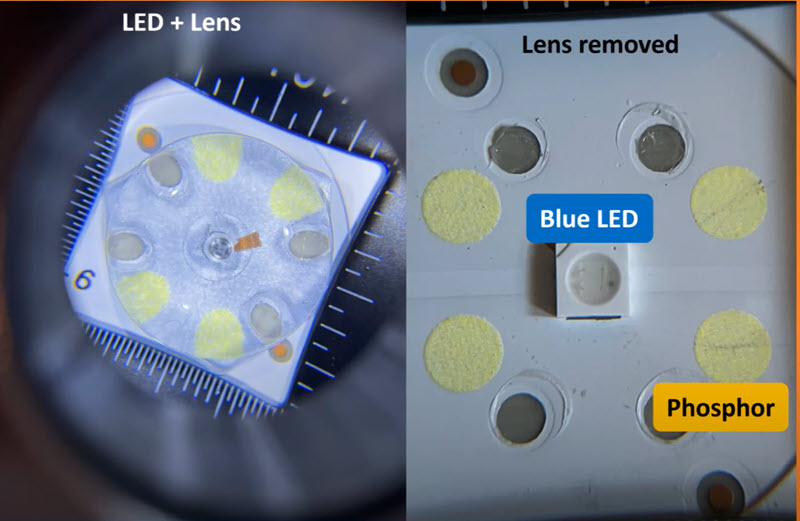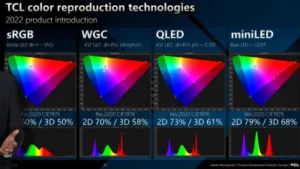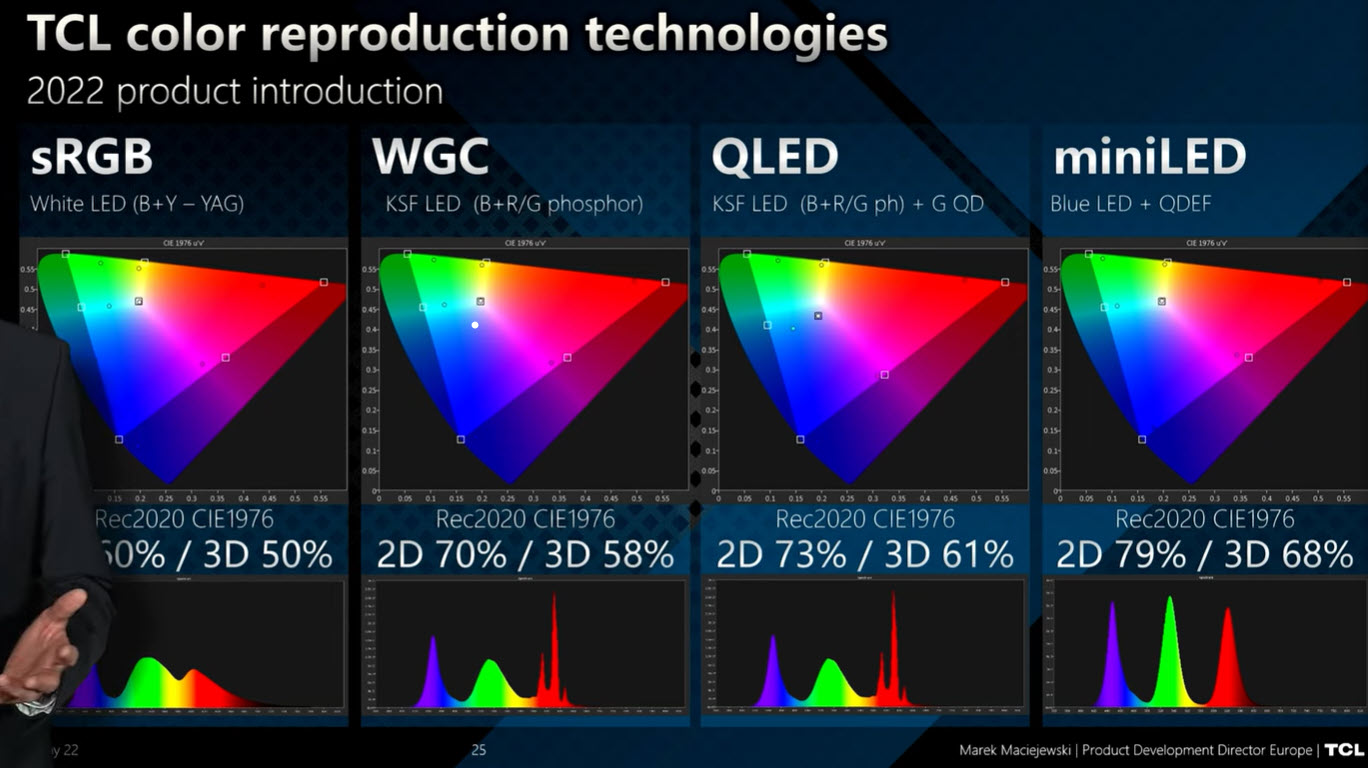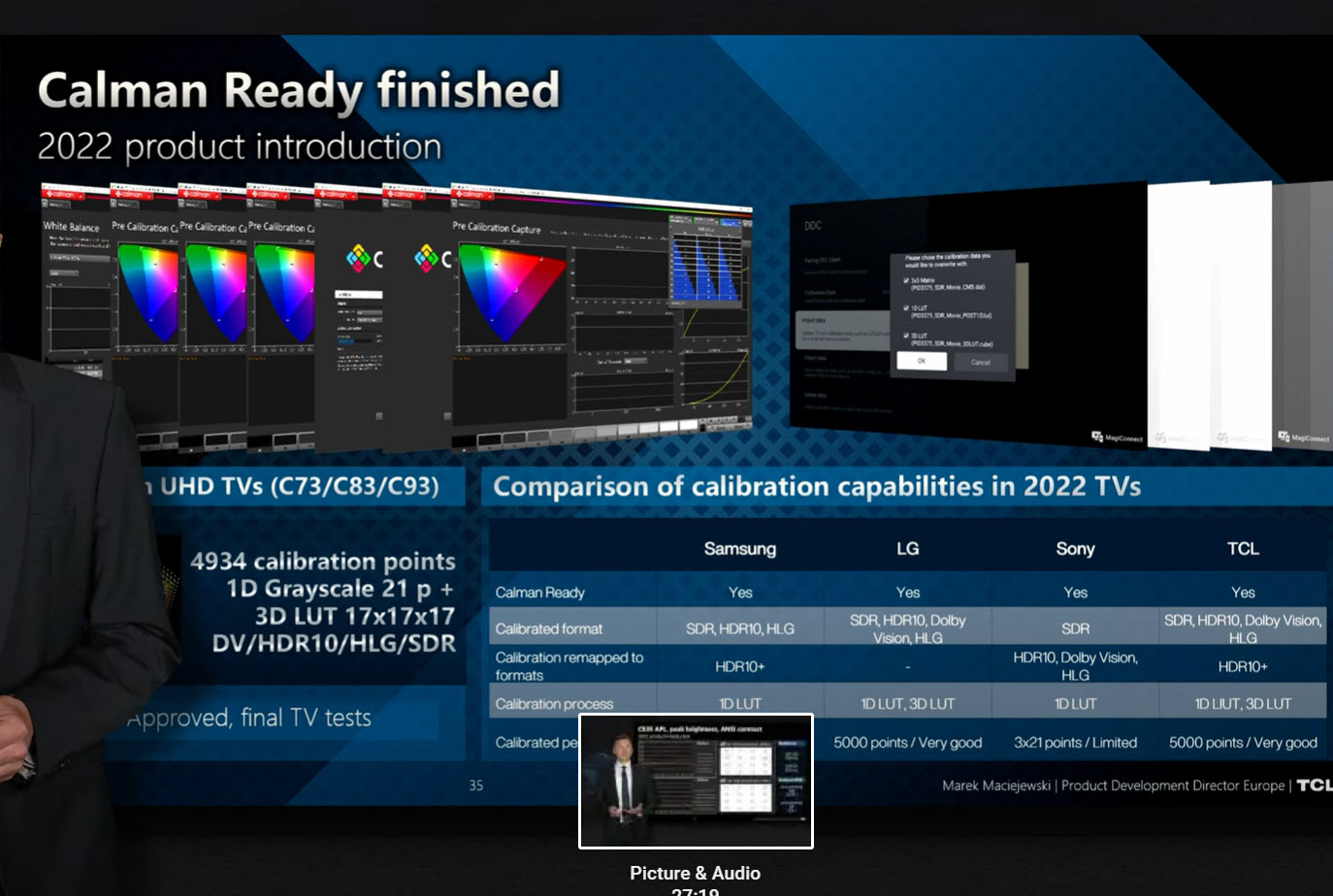Marek Maciejewski of TCL has started a YouTube channel and uploaded an interesting 45 minute video on developments in the TCL TV business this year. There’s a lot in it but a couple of items got my attention as a display geek.

First, here’s a quick summary of the main contents:
- Introduction then a market overview – with some very detailed and useful data on the European TV market in the slides shown
- A section on the investments by TCL’s CSOT LCD panel business which has already had $36 billion of investment. Includes some hints on future directions, such as inkjet printed OLEDs, microLEDs and foldable and rollable OLEDs
- TCL’s developments in miniLED TV (where it has been a pioneer)
- Image Quality & audio – which I will dig into in this article
- SmartTV
- Gaming
- The TCL 2022 TV Range
- Soundbars
There’s some overlap between the miniLED and image quality sections of the talk, of course. Maciejewski highlighted that TCL is now on its fourth generation of miniLED TVs and the technology has continued to develop strongly with
- better processing of the backlights and more zones (12 bit driving and 16 bit processing)
- Higher brightness – the peak brightness is now 2,500 cd/m2
- Better native contrast of the panel and reduced ‘halo’ effects
- Better viewing angle performance
- Improved anti-reflectance performance
- Wider colour gamut
Today, I’m going to focus on three of these items – native contrast, viewing angles and wider colour gamut.
Better Contrast
TCL CSOT has been a proponent of VA LCD panels for TV use and one of the key advantages of this kind of LCD is the higher level of native contrast which is typically up to around 4,000:1. The native contrast is the contrast available purely from the panel, without any manipulation of the backlight (and dynamic contrast is the overall contrast after allowing backlight control). What caught my eye is that the claimed contrast of 7,000:1 which means a significant drop in the black level. We’re used to incremental changes of a few percent, but this is a 43% drop in the black level, by our calculation.
I’m pursuing more detail on how CSOT is achieving this, but a Poster paper at this year’s SID talks about how better collimating the light going into the back of the LCD improves the black level and how reducing the scatter within the LC material itself also helps, so that may be a clue. (P-110 M.Liu Analysis of Light Leakage in the Dark State with W Pixel in the Liquid Crystal Display (LCD))
Of course, the downside of the VA technology has been viewing angle, compared to IPS LCDs and emissive displays. Over the years, VA panel makers have got around this by sub-dividing the pixel and having different LC material tilt in different parts of the pixel. (I recently wrote a ‘deeper dive’ on VA alignment for the 8K Association. You can find the article here. Makers have even developed dual driving where half the pixel has been driven with one gamma curve, while the other half is driven with another although that makes the backplane more complicated.
As far as I know, up to now, the maximum number of domains per pixel has been four, but Maciejewski said that the firm has now developed production panels with 8 domains and that this further improves viewing angle even further and, as far as he is concerned, there is no longer any issue with VA LCD viewing angles. The 8 domain architecture was first reported as a development project last year but is now coming to market. Last year’s development panel, though, had contrast at 5,000:1.
The third area that I picked out was on colour. Maciejewski went into more detail than we are used to seeing about the technologies used by TCL in its TVs. Although he didn’t report any technology that we have not reported on, it is unusual for a maker to detail how it is positioning the different wide colour gamut technologies in its product range. The firm has four levels of colour performance:
- sRGB for regular sets that uses YAG and blue LEDs. (YAG is the lowest cost option but has broad primaries making WCG difficult)
- Upgraded sets that reach 70% of Rec. 2020 in 2D and 58% in 3D will use blue LEDs and KSF red and green phosphor. (GE’s KSF material is used in a wide range of WCG sets, but is rarely broadcast, although it’s easy to identify from the front of the set if you have a spectrometer).
- The QLED sets (without miniLED) have the same blue LEDs plus R/G phosphor but also adds green QDs to boost green narrow band output and reaching 73% of Rec. 2020 and 61% in 3D. (Regular readers may remember that Peter Palomaki found a hybrid backlight in a TCL 5 Series TV that he tore down https://www.youtube.com/watch?v=3nnLo5wd9aA&t=443s but that used YAG + QDs)
 Peter Palomaki foiund this YAG + QD light source in a TCL 5-series set that he tore down.
Peter Palomaki foiund this YAG + QD light source in a TCL 5-series set that he tore down.
- The miniLED sets will use blue LED and QDEF film for both red and green output via QDs. Rec. 2020 coverage is 79% in 2D and 68% in 3D. (QDEF film has been a relatively expensive way to implement QDs)
Maciejewski said that TCL had also looked at a combination of blue LED + green from perovskites and red from KSF phosphor. With that combination, TCL can reach 90% of Rec. 2020 coverage. However, there is no content that has that kind of gamut range yet, he explained, so the firm is sticking where it is at the moment.
Given that Nanosys has said that a million sets have been made using the firm’s xQDEF “QD in a lightguide’ technology, I was slightly surprised that TCL does not have something in its line-up this year.
Colour needs to be accurate and he highlighted that the firm had analysed the different support for Calman Ready calibration in the major brands. It was determined to be at the highest level in the number of modes (SDR, HDR10, Dolby Vision and HLG) that are supported. The sets have 4934 calibration points. (BR)



